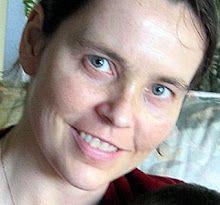
I helped out on midnight checks two nights out of the four I was at ADA camp. Midnight checks were one of the highlights of my experience. It was the one chance I had to directly assess and treat blood sugar levels – under the supervision of the providers, of course. An RD’s scope of practice with diabetes is fairly limited, but in reality that all depends on the provider the RD is working under. One RD told me that we are never allowed to puncture the skin, but I know another RD who is a CDE (certified diabetes educator) and is working on her BC-ADM (board-certified advanced diabetes management) who gives insulin injections, manages insulin pumps and is allowed to adjust insulin doses, so it all depends. One of the ARNP’s admitted to letting high school kids do finger sticks in other venues.
Midnight checks entailed stealth maneuvers through the woods past raccoons and cabins full of sleeping campers, identifying our ADA kids in the dark and wrangling their arms out of their sleeping bags, performing finger sticks on them without making them cry, and administering snacks if their BG was low (<150). Most of these kids were incredible – they’d stick out a hand and fall back asleep while we did our thing. However, if a child had a low BG, it was much more challenging to get him/her to sit up and eat a snack. One of my girls hated the fruit roll-up I gave her so much that she started gagging and crying right there in the top bunk in the dark at midnight with her eyeshade pulled down around her chin. I tried to keep her calm and get her to swallow. Telling her, “the faster you eat it, the sooner you’ll be done,” was NOT the right thing to say and in the end, she had to wash down the half-chewed fruit with some Boost. Within seconds her tears had dried and she had settled back down into her sleeping bag – that's what I love about kids, that ability to move on. Next day we had a little laugh about it together. If faced with that situation again, I think I’d go for the Boost first time around. It’s not a whole food but it’s easy for a groggy child to drink down quickly. The second time I did midnight checks, all three of the kids I checked on had BG’s within normal range so I didn’t have to do anything special but this experience was satisfying in its own way – it meant that we (the ADA staff and the kid) were doing a good job! It also meant that I didn’t have to stay up for 2am checks.

I ended up staying up anyway because Aaron, the provider “on call” that night, was in a teachin’ mood. We (me, Aaron, Stefanie, an RD, and Annie, a dietetics student) took our headlamps and some snacks (dark chocolate and Weinhard’s root beer) and went outside to the picnic area so that our talking wouldn’t wake up the people sleeping in the ADA cabin. We passed a raccoon and her little one rummaging through the garbage just outside – they snacked on camper trash while we sat and talked.
Aaron gave us a lot of insight into the mechanisms behind diabetes, the different kinds of insulin and their best uses, and showed us how he calculates an insulin dose based on the child’s BG, their carb count, their insulin-carb ratio and the insulin correction factor. These last two are calculated from the kid’s total daily dose (TDD) of insulin, which is established by the child’s care team outside of camp based on the child’s weight and insulin sensitivity.

delicious snacks and evening entertainment
Dosing the kids at camp was a little different from dosing them at home, because kids tend to be a lot more active at camp. Activity naturally brings down blood sugar, so the insulin doses were adjusted down to account for the increased activity. If a child was on a pump, their basal rate was adjusted when they arrived at camp and as needed throughout camp, and bolus doses to cover meals and high blood sugars were also lower than usual to keep them from going too low between meals and overnight. Children who injected their insulin got a lower dose of Lantus, a long-acting insulin. It was a real balancing act!
I’m sure my explanations are insufficient to describe the whole process that goes on in a provider’s head when deciding an insulin dose. The provider’s judgment is based on the child’s history and TDD, but after a few days at camp and getting to know the kids a little better, I’m guessing that there were countless other small details that influenced the dosing.
So that was what I learned in a nutshell about blood sugar control at ADA camp. It was really a great opportunity to witness the daily challenges of maintaining blood sugar levels for both the kids and the providers.
I still have a few miscellaneous experiences that I’m anxious to write about, so stay tuned for one more post about ADA camp!

No comments:
Post a Comment